The perfect way to conserve excess tomatoes, this easy, homemade tomato paste can be made on the stovetop, in your oven, or in a slow cooker.
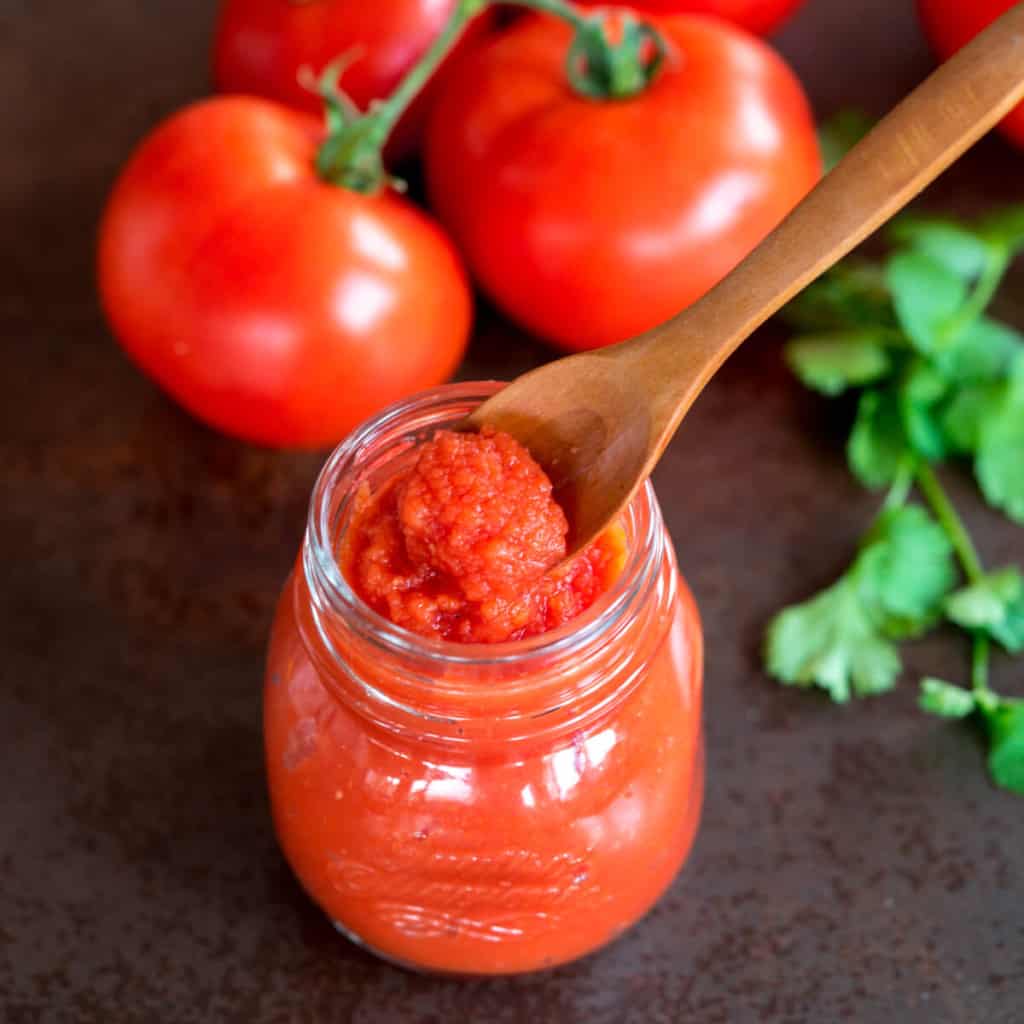
Whenever I plant my vegetable garden, there gets to be one point where I have so many of a particular vegetable (or fruit, if you prefer) that I don’t know what to do with it.
When it comes to tomatoes, there are a few great ways to preserve them and have them on hand when you need them. Tomato paste is one of may favorite ways to do it. (Homemade dried tomatoes and tomato powder is another.)
What is tomato paste?
Tomato paste is a thick, concentrated tomato sauce. Depending on how long you cook or dry it, it will be thicker and more concentrated. In some areas of the world, it’s sun-dried until very little water is left in the mixture.
Why make your own tomato paste?
Making tomato paste is one of my favorite ways to use and conserve excess tomatoes. Tomato paste is very concentrated, so you can easily reduce a lot of tomatoes into a small space. You can then freeze it, can it, or make it into fermented ketchup which also keeps surprisingly well.
Ingredients
As you can probably guess, the main ingredient in tomato paste is tomatoes. Whether or not you add other ingredients is totally up to you. Some people add olive oil, others add peppers (such as bell peppers or Italian peppers). Whether or not you add salt is also up to you.
I, personally, prefer to keep the tomato paste on the simple side and add in other ingredients, as needed, when making my recipes using the paste.
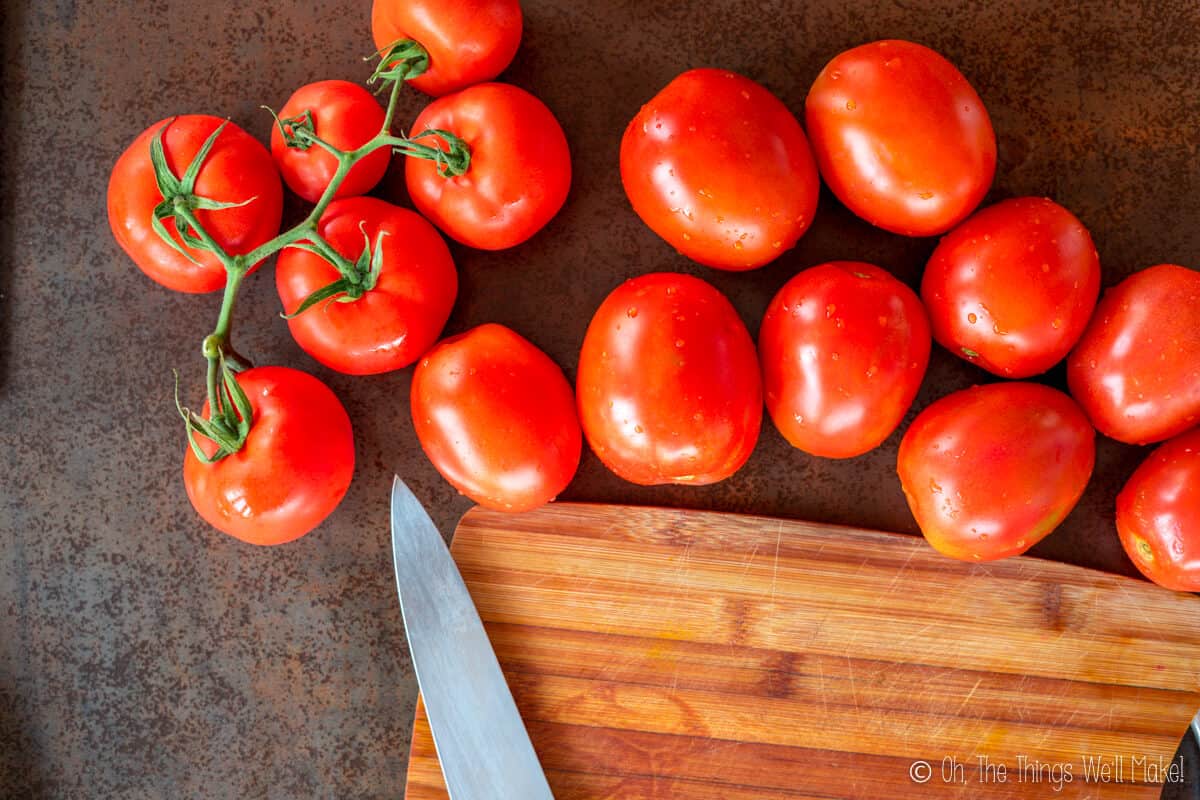
Which tomatoes make the best tomato paste?
While you can use any tomatoes you have in your garden (or find at the market) for making tomato sauce or tomato paste, certain tomato types work better than others.
Tomatoes like Roma tomatoes, and other so-called paste tomatoes, have more flesh and fewer seeds. That means that they also have less water. So, they take less time to cook down to a thick, hearty sauce and generally make more sauce per tomato (of a similar size).
Most of the best varieties for sauces and pastes are tall and elongated, rather than short and wide.
Procedure
There are numerous ways to make tomato paste. Some people prefer to peel the tomatoes and seed them before beginning. Others prefer to leave the skin and seeds and cook everything together. I’ve found my own way to make the process quick and easy!
While I used to peel all of the tomatoes before making tomato sauce or tomato paste, I found it took a lot longer than the way I do it now.
Now, I rinse the tomatoes and cut them into chunks. I then blend them in the blender and later strain out the seeds and skin. You can use either a mesh strainer or a food mill to easily remove them and get a smooth sauce or paste.
Should you leave the skin and peels while cooking?
Some people begin cooking the sauce with the peels and seeds and then later strain them out. The idea is that the pectin in the tomato skins will be released into the sauce to help thicken it.
On the other hand, cooking the sauce with the seeds and skin can make it bitter. This, of course, may depend on your particular tomato variety.
I prefer flavor over thickness (which you eventually get anyway if you reduce it enough), but you can experiment with your tomatoes to decide which method is best for you!
Making a thick tomato paste
Making a thick tomato paste is simple. All we’re really doing is making a basic tomato sauce by cooking a tomato purée and slowly reducing it further to make it more concentrated. We do that by evaporating out even more of the water. The more water you evaporate, the thicker your paste will be.
You can save some cooking time cooking by removing the seed sections before blending the tomato pieces.
There are several ways to efficiently reduce the water content of your tomato paste.
Stovetop method
I normally make my tomato paste on the stovetop. To do so, slowly cook the tomato sauce in a pan on the stove over low heat. The idea is to evaporate away the water, until you reach the consistency that you like.
While I prefer this method, keep in mind that as the sauce thickens, it’s also more likely to burn.
It’s important to cook at a low temperature, stir often, and keep a constant eye on things, especially towards the end of the process! If you won’t be able to watch it very closely, you may prefer using one of the other methods. (Or you can begin on the stovetop and finish up in a slow cooker or in the oven.
Slow cooker method
You can also use a slow cooker to make or finish your tomato paste. It’s important to cook it with the lid off to allow for evaporation of the water.
As the paste gets thicker, you may want to turn it it to the low heat or “keep warm” setting to help keep the sauce from burning. Using a rubber or silicone spatula to stir it occasionally isn’t a bad idea either. (Use the spatula to scrape the bottom of the crock so that the paste doesn’t stick to it.)
Oven method
Some people choose to make their tomato paste in the oven, but I use it to finish up the thickening process. You can also sun dry the sauce or use a food dehydrator.
To do so, spread the tomato sauce over a clean baking pan (or dehydrator trays if using a food dehydrator).
In the oven, choose one of the lowest temperature settings and turn on the convection setting (fan) if you have that option. Some people like to leave the oven slightly open to allow for steam to escape, but I haven’t found it to be necessary. Occasionally use a spatula to scrape the pan and stir up the paste. Continue until you reach the desired consistency.
Thickening the tomato paste in the oven or slow cooker may be slower, but it’s easier to keep your paste from burning using these methods. (Your paste won’t need as much attention throughout the process.) Using these options isn’t foolproof, though. You’ll still want to be careful when it gets thick, to avoid burning!
Storage/shelf life
Tomato paste keeps longer than tomato sauce because of its low water content. How long it can keep will depend on how much water content is left in your paste. A paste with more liquid will probably only keep for around 7-10 days.
If you make the paste very concentrated, though, it should easily keep for several weeks in the fridge. You can also prolong the shelf life by removing any air around it using a vacuum sealer.
Since it’s hard to know how well a particular batch will keep, I prefer to freeze any tomato paste that I won’t be using within a week.
Freezing tomato paste
When freezing my homemade tomato paste, I prefer to use perfectly cube-shaped ice cube trays like the ones I used for freezing my homemade baby food and smoothie cubes, homemade pumpkin puree, or homemade pesto (my son’s favorite!).
The advantage to using perfectly cube-shaped ice cube trays is that the frozen tomato paste cubes fit together perfectly in ziplock bags without wasting any space. You can then label your bags and sort through them easily to find what you need in the freezer drawers.
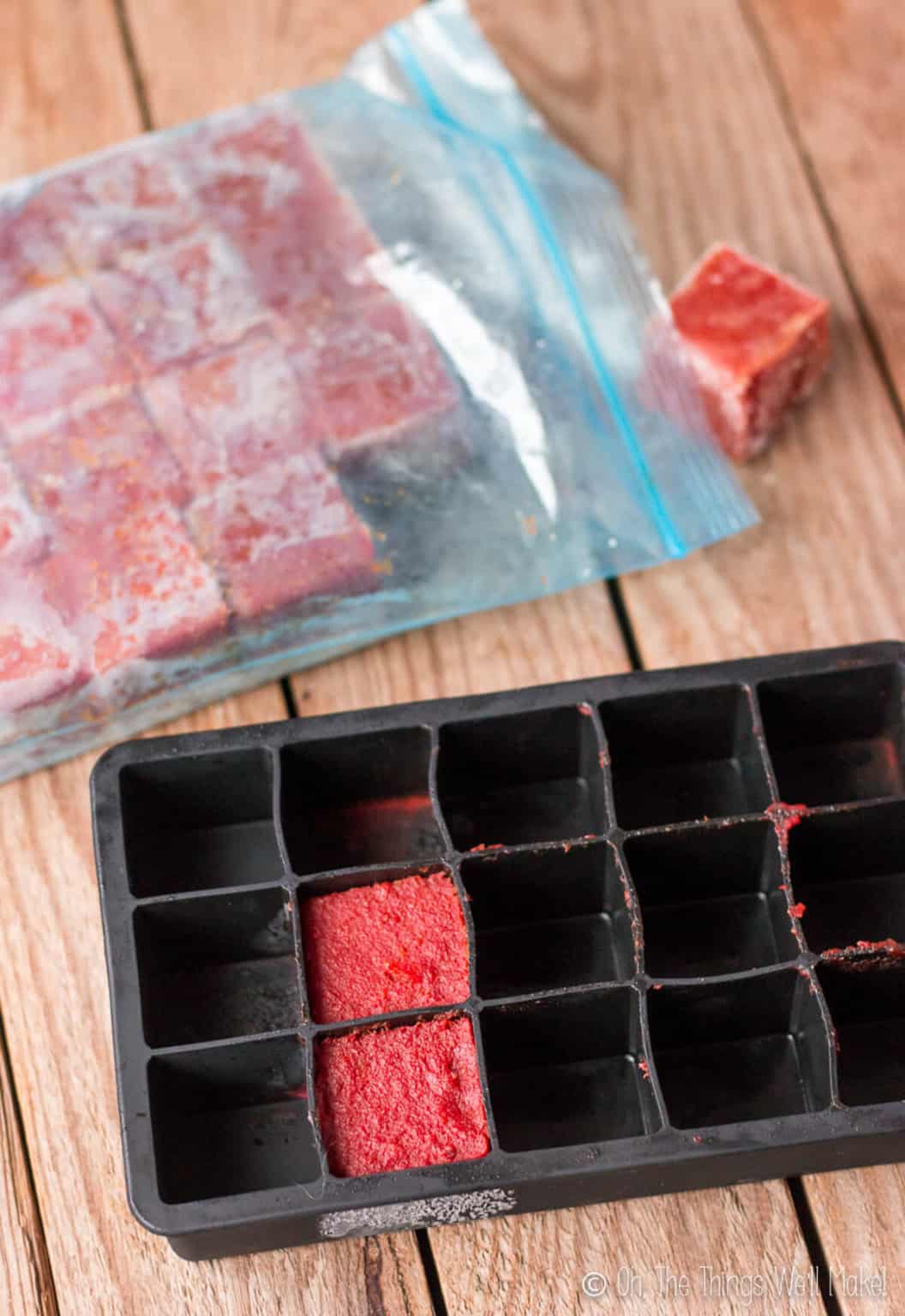
Canning
I don’t have a lot of experience with canning, but I’ve read that it is possible to can homemade tomato sauce and tomato paste. You may need to add some citric acid (which can be in the form of lemon juice) to your paste if it isn’t concentrated enough. (This is to prevent the growth of the bacteria that cause botulism.)
Materials
Video
Uses
Tomato paste can be added to soups and other dishes to give some tomato flavor and a touch of color. It’s also great in other sauces like ketchup or barbecue sauce.
My son’s favorite use is adding it to some cooked ground beef (along with some garlic, cumin, and salt) and served in flour tortillas!
Easy Homemade Barbecue Sauce Recipe

Easy, Homemade Fermented Ketchup: Fermented Foods at Every Meal
Makes around 3 cups.

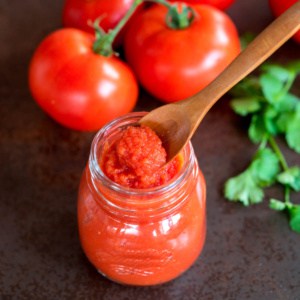
Easy Homemade Tomato Paste Recipe
Ingredients
- 8 lbs. tomatoes
- 1.5 tbsp extra virgin olive oil (Optional)
Instructions
- Rinse the tomatoes well, remove the stems, and cut into chunks.
- Fill a blender jar with the tomato chunks and blend until the tomatoes have all reduced to a fine sauce.
- To strain out the seeds and skin, place a mesh strainer or food mill over a large pot on the stove (or over the crock of a slow cooker pot). Pour the tomato sauce into the strainer. Use a sspoon or a spatula to press the tomato sauce through the strainer into the pot below.
- Repeat with the remaining tomatoes. If you want to add red peppers or other vegetables, now is the time to do it.
Stovetop
- Heat the sauce over low to medium heat until simmering. Occasionally stir it and check on the consistency. As the water evaporates, the sauce will thicken. As it thickens, turn the heat down and check on the tomato paste more often. (It's more likely to burn as it gets thicker and has less water.)
Slow cooker
- Cook the tomato sauce in the slow cooker on low with the lid off. In the slow cooker, you can leave the tomato paste unattended for longer periods of time. Still, as it starts to thicken, you will also need to check on it more often to prevent it from burning.
In the oven
- To give the tomato paste a more caramelized flavor, and reduce it even further, you can bake it on clean baking pans on low heat in the oven. Occasionally use a spatula to scrape the tomato paste from the bottom of the tray with a spatula and stir it, while checking on the consistency. Some people choose to do the entire process of making the tomato paste in the oven, but I prefer to reduce it to a thick sauce on the stove first.
- Once you've achieved the desired consistency, the tomato paste is ready to be used in recipes, or ready to be stored.
Notes
Yield
Makes around 18 ounces.Adding other vegetables
Some people like to add red peppers, onions, or other vegetables to their tomato paste. I prefer to keep things simple and just use tomatoes and add in the desired vegetables, spices, and seasonings when making a recipe with the tomato paste.Storage
It can be stored in the fridge for 7-10 days or even longer if the paste was reduced enough. It can also be canned or frozen. (Add some citric acid (which can be in the form of a bit of lemon juice) to the paste before canning. If it’s concentrated enough, it may not need it.) Freezing in perfectly cube-shaped ice cube trays is a great way to save space in the freezer. (The cubes can be stored in freezer bags.)This post was originally published on Nov. 11, 2016. It was rewritten, adding new photos and clearer instructions in June 2021.
 Español
Español
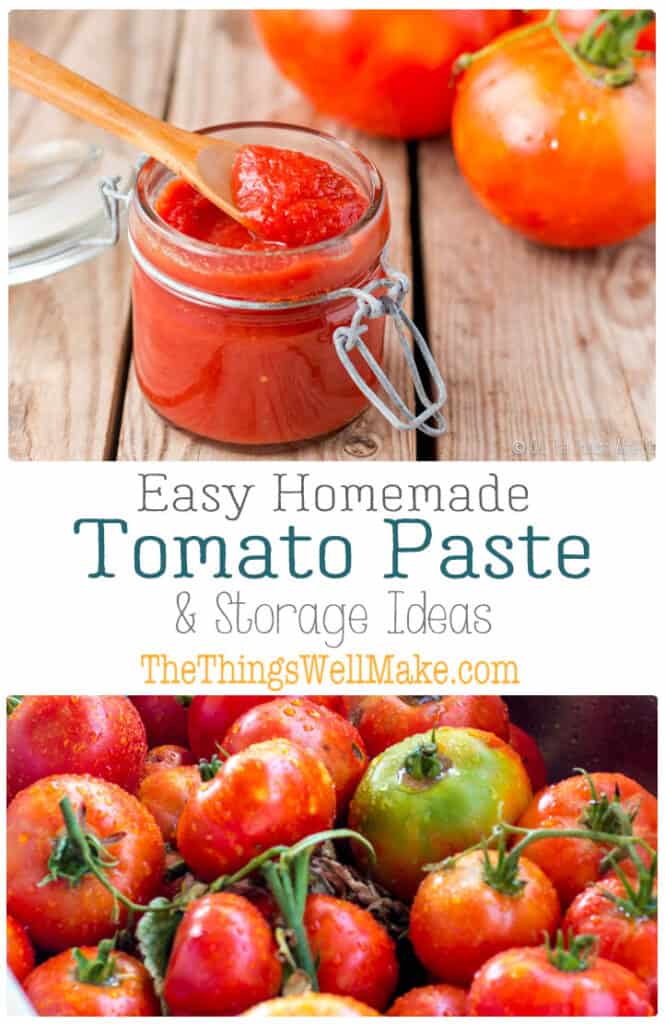
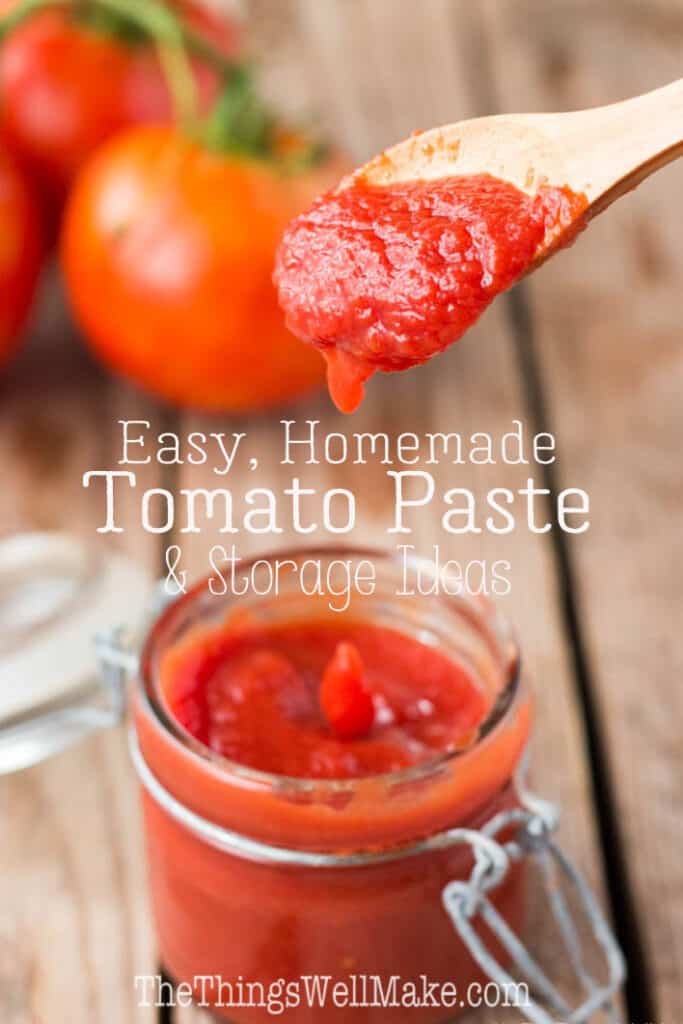
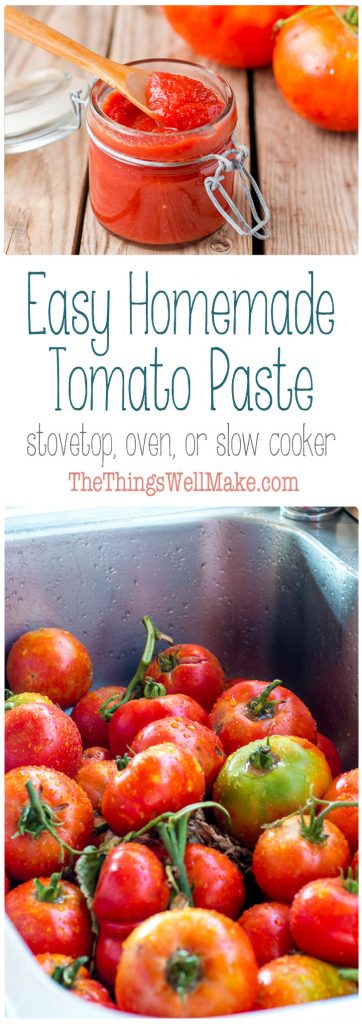
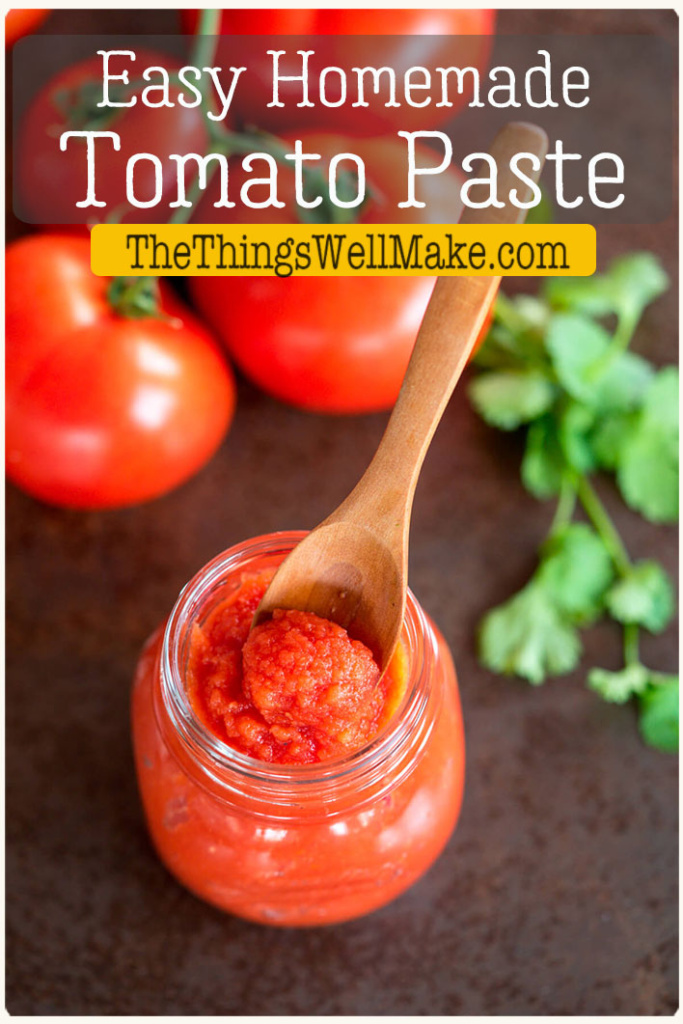
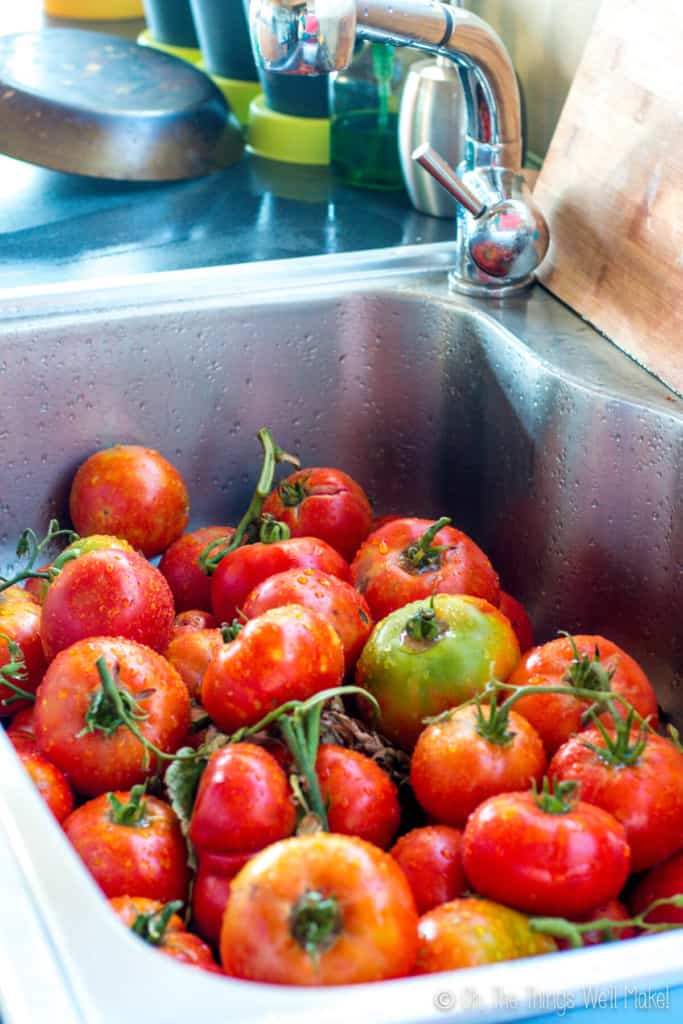
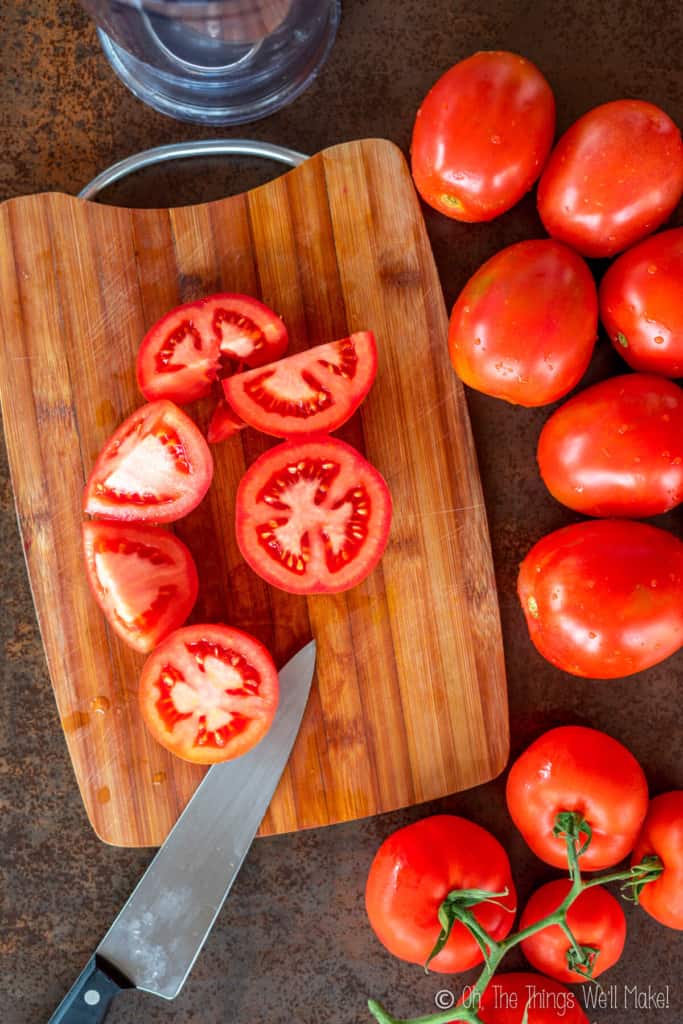
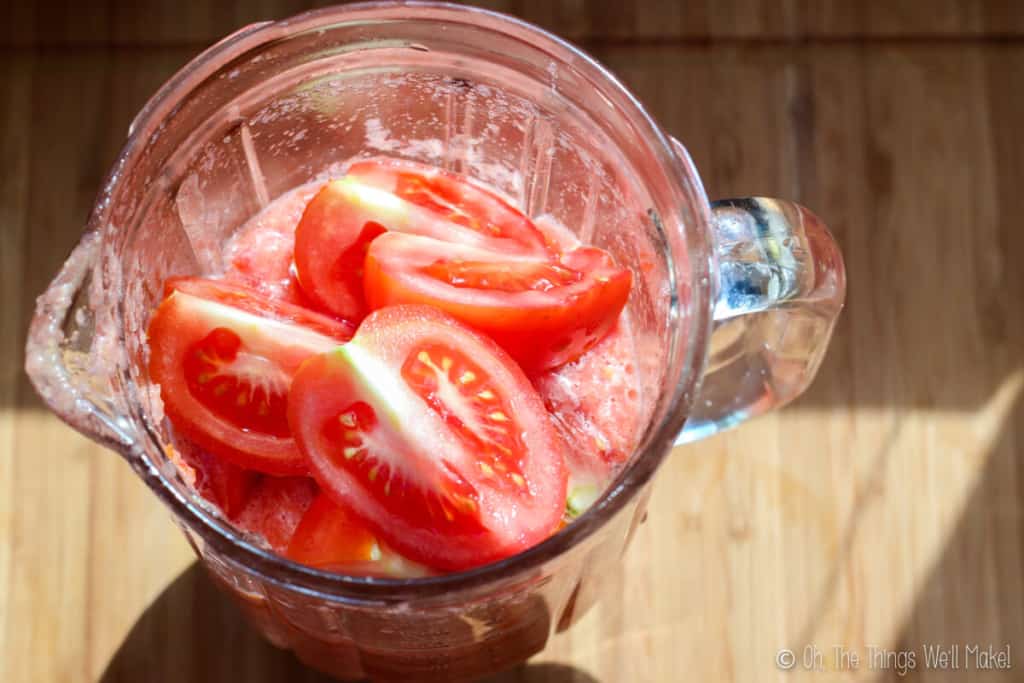
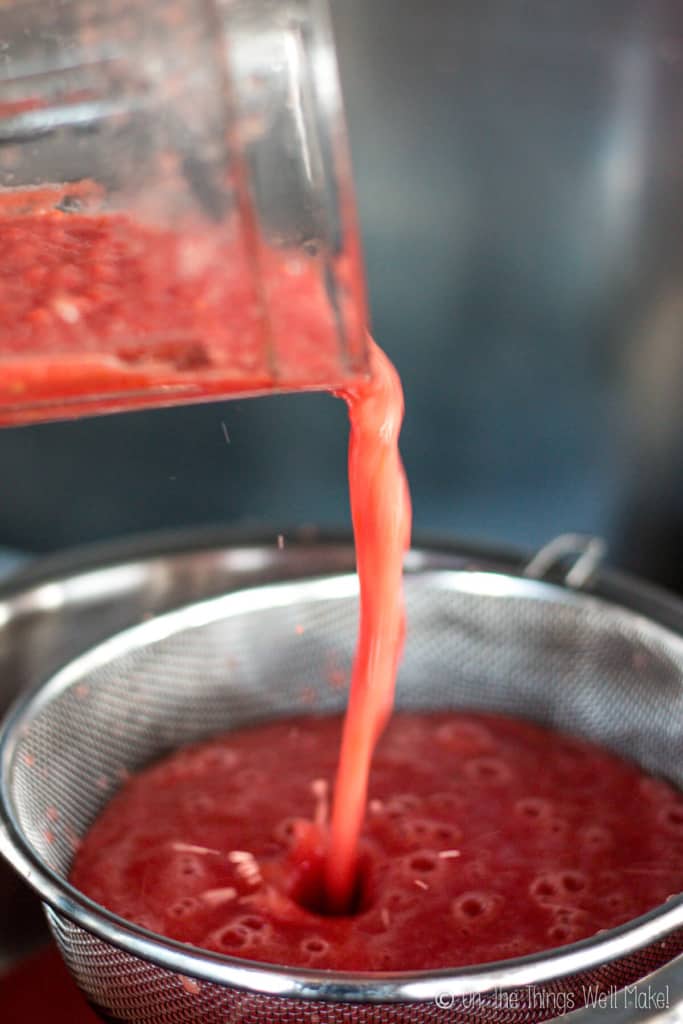
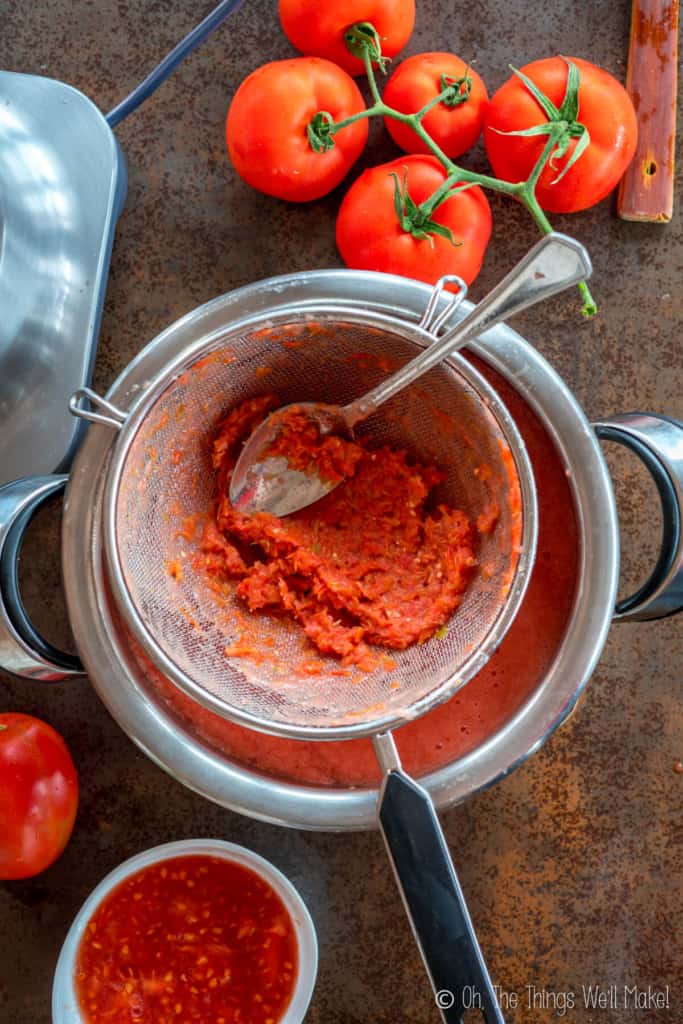
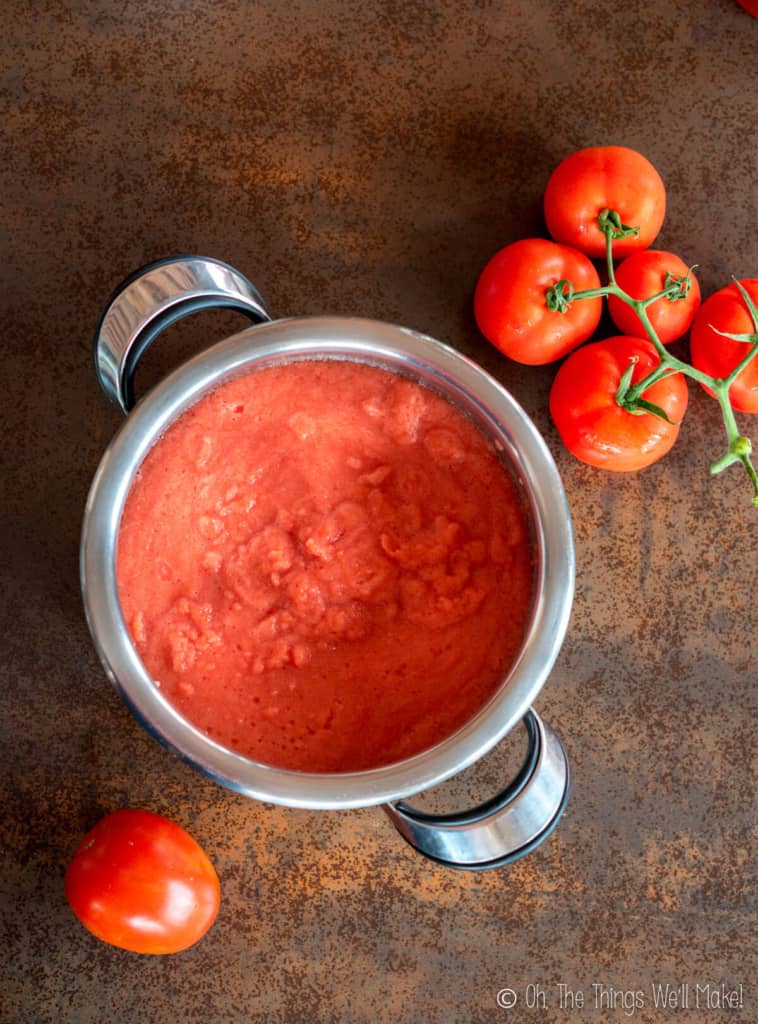
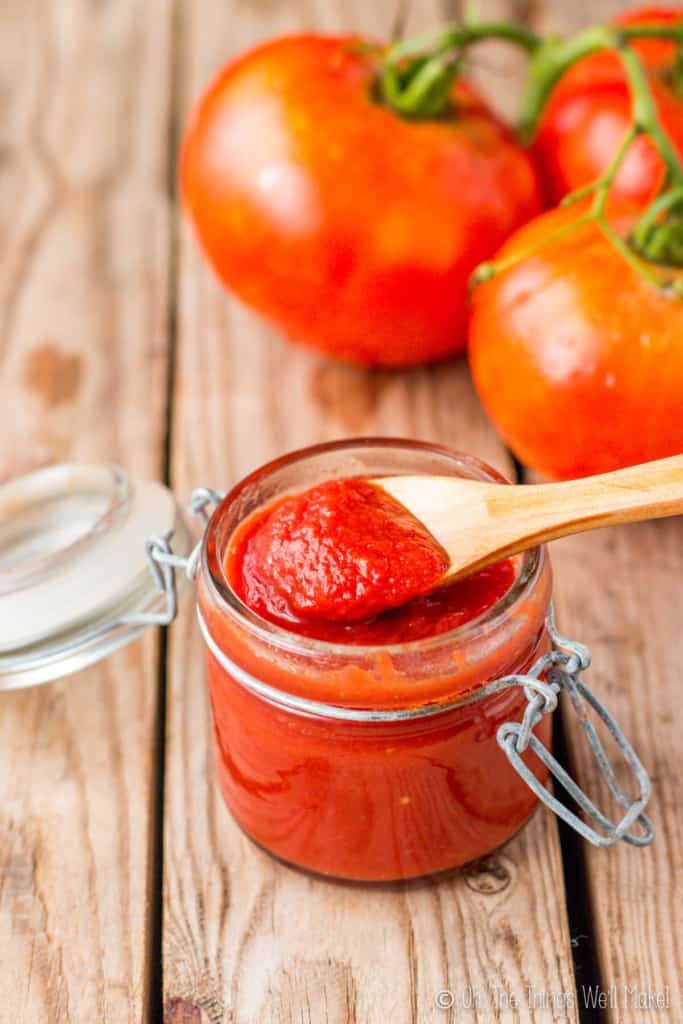



 Natural Homemade Deodorant for Sensitive Skin
Natural Homemade Deodorant for Sensitive Skin
Cherie
I made this last night after work. I put my tomatoes in my Blendtec blender and hit the juicer button. I didn’t need to cut them unless they were a little too big to go in whole. Then strained that through a fine sieve. Worked beautifully! I cooked them on my stove. When it was done, I took my mini cupcake tin and put a tablespoon of the paste in each cup and froze them. Tonight I will be wrapping each one up. Thank you for the inspiration!
Tracy Ariza, DDS
Awesome, Cherie!
I’m so happy the process went well for you!
Donatella Bennett
Making it now ! Looks great so far. I am not sure, when you would add the olive oil if you wanted to add it ?
Tracy Ariza, DDS
I would add it after having reduced the sauce mostly, towards the end of the cooking process!
Cherime MacFarlane
So far so good. It is thickening up after 9 hours in the slow cooker. As to canning tomatoes, that is exactly what I intend to do with the paste when done. I’ve been canning tomatoes for years. You can do a boiling water bath for 35 minutes but a pressure canner is a better method, 10 minutes at 10 lbs. (I’ve been using an electric one for a few years now and it works fine.)
Tracy Ariza, DDS
Thanks!
رب گوجه عمده
bless you sis for this wonderful job that you’re doing. It has help me a lot in my kitchen.
John & Victoria
If you want just tomato paste, without the seeds, start with tomatoe puree that has been made by running the raw, cleaned, and maybe sliced tomatoes run through a juice machine. The juice machine works surprisingly great on tomatoes. With a half bushel of tomatoes juiced, I add a whole green pepper (cored), and a whole onion (skinned of course), also run through the juice machine. Boil the puree for a half hour and add a tsp of pure lemon juice per quart (necessary). Then can it. Or continue boiling it down to a puree, then can it – your choice. You can add some sugar and any other spices if you prefer, prior to canning.
When you’re done with juicing the tomatoes, don’t discard the remains! If you also own a dehydrator, put the remains in the dehydrator until dry (seeds, onion, and green pepper remains and all). When dehydrated, put the dried remains in a blender and grind until a powder is made. Store the dried mixture in appropriate containers (we just use canning jars) and use as a zest in anything that can use tomatoes.
Tracy Ariza, DDS
Great tips, thank you!
Jane
“Easy” is true for this great-tasting recipe, but I am even lazier than easy. A little internet research led me to discover the timings for cooking tomatoes in the instant pot. The instructions said “water not needed,” because tomatoes are so juicy, but I didn’t want to risk that. I started with 1/2 the recipe above. I threw the cherry tomatoes into a small stainless steel mixing bowl, poured 1 cup water into the inner pot, and put the tomato filled bowl on a rack in the instant pot. I set the pot for 8 min. pressure cooking, and when the timer went off, I let it release naturally. Then I ran the tomatoes through a food mill. The sieved tomatoes went directly into the inner pot, this time without water, I set the slow cooker function for 4 hrs. with no lid. Perfect – only the food mill, the smaller bowl and the inner pot needed washing. I suppose if you had a larger bowl for the tomatoes, or more tomatoes, the slow cooking could take longer, so you might want to watch for proper thickness.
Tracy Ariza, DDS
Thanks, Jane, for the tips!